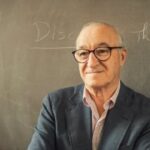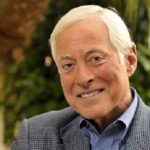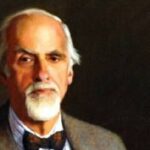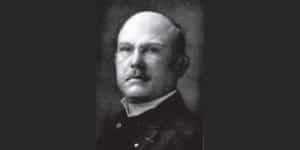Milton Erickson biography and quotes
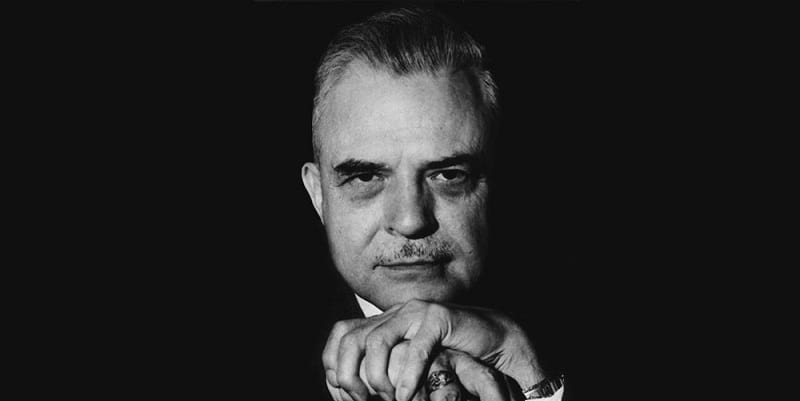
Milton Erickson (Milton Hyland Erickson; December 5, 1901 – March 25, 1980) was an American psychiatrist and psychologist. He specialized in medical hypnosis and family therapy. Milton Erickson was also founder and president of the American Society for Clinical Hypnosis and affiliated with the American Psychological Association and the American Psychopathological Association.
He is best known for his theory and conception of the subconscious. He is also credited for his contributions to family therapy, neuro-linguistic programming, and solution focused brief therapy.
Biography of Milton Erickson
Youth
Milton Erickson was born in Aurum, Nevada. Growing up in Wisconsin, his childhood was marked by illness and suffering. In childhood memories he shared later in life, he often referred to auto-hypnotic flashes of light.
During his illnesses he experienced a hypnotic state in which he was very aware of the fact that his physical communication often contradicted his verbal communication. He focused on learning to understand his own body language. This interest would predominate throughout his professional career.
Milton was the second child of Albert and Clara Erickson’s nine children. He was born in a mining camp, in Nevada. His father had a job here as a silver miner. Soon the family moved to a farming community, Beaver Dam, in Wisconsin. All children attended the same school, consisting of a single classroom. They were all expected to work hard on the farm.
Illness and discomfort
Erickson said he was late in learning to speak and also had difficulty reading as a toddler. He himself described this as dyslexia. He later stated that the dyslexia, and other inconveniences such as color blindness and tone deafness, helped him discern aspects of communication that other people overlooked. This positive view of his troubled childhood would become a hallmark of his holistic approach throughout life.
Although education was also important to the family, books were scarce. Erickson’s desire to learn was so strong that he read the dictionary from cover to cover several times. He also read the few texts and books that the family owned. At one point he thought he had overcome his dyslexia. He described these key moments in a paper called “Auto-hypnotic Experiences of Milton Erickson”.
Polio
At the age of 17, young Milton Erickson was stricken with polio, which left him with lifelong disabilities. This gave him the opportunity to explore the potential of self-healing through hypnosis. He began to actively remember body memories by thinking about the muscle activity of his own body.
By focusing on these exercises, he slowly regained some control over parts of his body. Eventually he was able to talk and use his arms again. He still couldn’t walk at that time.
Canoe trip
He decided to challenge himself even further. He set out on a 1,000-mile canoe trip with only a few dollars in his pocket. After this grueling journey he was able to walk again with a cane. A wheelchair was not necessary until the last decade of his life. Milton attributed his self-healing entirely to his auto-hypnosis.
After young Milton was able to walk again, he attended the University of Wisconsin. Here he obtained a degree in psychology and medicine. He then began a formal study of hypnosis in the laboratory of Clark Hull. Because his ideas were different from Hull’s ideas, Erickson began an independent investigation into the nature of hypnosis. He received an MD degree from the University of Wisconsin School of Medicine in 1928, after which he held important positions at state hospitals between 1929 and 1948 that facilitated active research.
World War II
During World War II, Erickson conducted mental and physical examinations on soldiers returning from the battlefield. US intelligence agencies also asked him to meet with other experts in the hope that together they would discover factors that could be used to improve communication between soldiers in combat. He met Margaret Mead and Gregory Bateson this way, with whom he would form lifelong friendships. The trio worked together on numerous projects and studies, such as strategic therapy.
Later life of Milton Erickson
When he was almost fifty years old, Milton developed post-polio syndrome. This includes muscle loss and pain, among other things. Around this time, the family moved to Phoenix, Arizona. They thought the better weather conditions would help with his healing. In Phoenix, Erickson settled into a private home practice where he would work for the rest of his life.
In Phoenix, Milton was active in the Society for Clinical and Educational Hypnosis (SCEH). This organization promoted research and trained physicians in clinical hypnosis. Due to personality conflicts and his own views, Erickson disengaged from the organization and founded the American Society for Clinical Hypnosis (ASCH) himself in 1957.
For ten years he was the founding editor of the American Journal of Clinical Hypnosis and had written at least one new article in every issue. He spent the next 2 decades of his life teaching other professionals and maintaining his private practice.
His relationship with Gregory Bateson led some researchers to take an interest in Erickson’s unique communication skills and therapeutic approaches. Erickson’s reputation spread quickly and many people wanted to see him and attend his seminars. He continued to do this until his death.
Milton H. Erickson died in March 1980. He was 78 years old. He was survived by his wife Elizabeth, four sons and four daughters.
Famous quotes of Milton Erickson
- “A goal without a date is just a dream.”
- “Life will bring you pain all by itself. Your responsibility is to create joy.”
- “Enlightenment is always preceded by confusion.”
- “Allow yourself to see what you don’t allow yourself to see.”
- “Change will lead to insight far more often than insight will lead to change.”
- “What is easiest to see is often overlooked.”
- “Life isn’t something you can give an answer to today. You should enjoy the process of waiting, the process of becoming what you are. There is nothing more delightful than planting flower seeds and not knowing what kind of flowers are going to come up.”
- “The most important thing in changing human behavior is the person’s motivation.”
- “You can pretend anything and master it.”
- “People do not come into therapy to change their past but their future.”
- “The unconscious mind works without your knowledge and that is the way it prefers.”
- “The unconscious mind is decidedly simple, unaffected, straightforward and honest. It hasn’t got all of this facade, this veneer of what we call adult culture. It’s rather simple, rather childish It is direct and free.”
- “Trance is a natural everyday experience.”
- “You can’t effect the cards that you are dealt, but you can determine how you play them.”
- “There are so many things in human living that we should regard not as traumatic learning but as incomplete learning, unfinished learning.”
- “I am very confident. I look confident. I act confident. I speak in a confident way…”
- “Life is lived in the present and directed toward a future.”
- “You see, we don’t know what our goals are. We learn our goals only in the process of getting there You don’t know what the baby is going to become. Therefore, you wait and take good care of it until it becomes what it will.”
- “You use hypnosis not as a cure but as a means of establishing a favorable climate in which to learn.”
- “You don’t take insults. You leave them with the insulter.”
- “Until you are willing to be confused about what you already know, what you know will never grow bigger, better, or more useful.”
- “You can’t learn to swim on a piano bench.”
- “You can trust the unconscious.”
- “Therapy is often a matter of tipping the first domino.”
- “I have no intention of dying. In fact, it will be the last thing I do!”
- “How many of us really appreciate the childishness of the unconscious mind?”
- “People who accomplish a great many things are people who have freed themselves from biases. These are the creative people.”
- “Emphasis should be placed more on what the patient does in the present and will do in the future than on a mere understanding of why some long-past event occurred.”
- “The conscious ego cannot tell the unconscious what to do?”
- “Don’t ask why the patient is the way he is, ask for what he would change.”
- “We always translate the other person’s language into our own language.”
- “Each person is a unique individual. Hence, psychotherapy should be formulated to meet the uniqueness of the individual’s needs, rather than tailoring the person to fit the Procrustean bed of a hypothetical theory of human behavior.”
- “Life’s difficulties are merely necessary roughage.”
- “The Structure of Magic I by Richard Bandler and John Grinder is a delightful simplification of the infinite complexities of the language I use with patients. In reading this book, I learned a great deal about the things that I’ve done without knowing about them.”
- “Dreams, puns, elisions, plays on words and similar tricks that we ordinarily think of as frivolous, all play a surprising and somewhat disconcerting role in the communication of important and serious feelings.”
- “Shut up, sit in that chair there and go into a deep trance!”
- “When I wanted to know something, I wanted it undistorted by somebody else’s imperfect knowledge.”
Books and publications by Milton Erickson et al.
- 2009. Naturalistic techniques of hypnosis. American Journal of Clinical Hypnosis, 51(4), 333-340.
- 1981. Experiencing hypnosis. New York: Irvington.
- 1977. Autohypnotic Experiences of of Milton H. Erickson. American Journal of Clinical Hypnosis, 20(1), 36-54.
- 1976. Hypnotic realities. New York: Irvington.
- 1976. Two level communication and the microdynamics of trance and suggestion. American Journal of Clinical Hypnosis, 18(3), 153-171.
- 1975. Varieties of double bind. American Journal of Clinical Hypnosis, 17(3), 143-157.
- 1970. Hypnosis: Its renascence as a treatment modality. American Journal of Clinical Hypnosis, 13(2), 71-89.
- 1967. An introduction to the study and application of hypnosis for pain control. In Hypnosis and Psychosomatic Medicine: Proceedings of the International Congress for Hypnosis and Psychosomatic Medicine/Mémoires du Congrès International d’Hypnose et de Médecine Psychosomatique/Beiträge zum Internationalen Kongreß für Hypnose und Psychosomatische Medizin (pp. 83-90). Springer Berlin Heidelberg.
- 1966. The interspersal hypnotic technique for symptom correction and pain control. American Journal of Clinical Hypnosis, 8(3), 198-209.
- 1965. The use of symptoms as an integral part of hypnotherapy. American Journal of Clinical Hypnosis, 8(1), 57-65.
- 1964. The confusion technique in hypnosis. American Journal of Clinical Hypnosis, 6(3), 183-207.
- 1964. An hypnotic technique for resistant patients: The patient, the technique and its rationale and field experiments. American Journal of Clinical Hypnosis, 7(1), 8-32.
- 1959. Hypnosis in painful terminal illness. American Journal of Clinical Hypnosis, 1(3), 117-121.
- 1959. Further clinical techniques of hypnosis: Utilization techniques. American Journal of Clinical Hypnosis, 2(1), 3-21.
- 1958. Pediatric hypnotherapy. American Journal of Clinical Hypnosis, 1(1), 25-29.
- 1954. Special techniques of brief hypnotherapy. International Journal of Clinical and Experimental Hypnosis, 2(2), 109-129.
- 1954. Pseudo-orientation in time as an hypnotherapeutic procedure. International Journal of Clinical and Experimental Hypnosis, 2(4), 261-283.
- 1948. Hypnotic psychotherapy. Medical Clinics of North America.
- 1941. The successful treatment of a case of acute hysterical depression by a return under hypnosis to a critical phase of childhood. The Psychoanalytic Quarterly, 10(4), 583-609.
- 1941. Concerning the nature and character of post-hypnotic behavior. The Journal of General Psychology, 24(1), 95-133.
- 1939. The permanent relief of an obsessional phobia by means of communications with an unsuspected dual personality. The Psychoanalytic Quarterly, 8(4), 471-509.
- 1939. The induction of color blindness by a technique of hypnotic suggestion. The Journal of General Psychology, 20(1), 61-89.
How to cite this article:
Janse, B. (2023). Milton Erickson. Retrieved [insert date] from Toolshero: https://www.toolshero.com/toolsheroes/milton-erickson/
Original publication date: 05/20/2023 | Last update: 05/20/2023
Add a link to this page on your website:
<a href=”https://www.toolshero.com/toolsheroes/milton-erickson/”>Toolshero: Milton Erickson</a>



